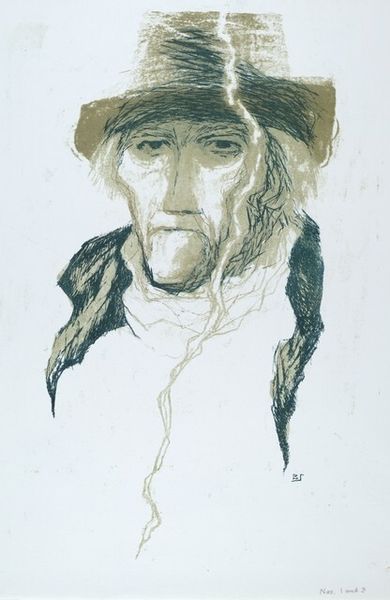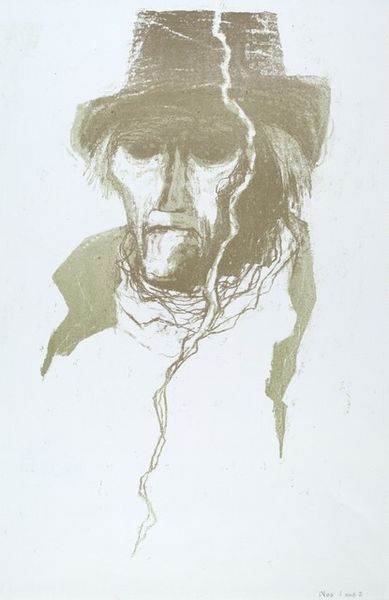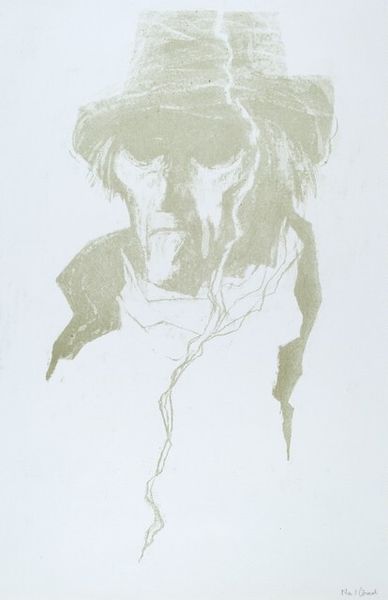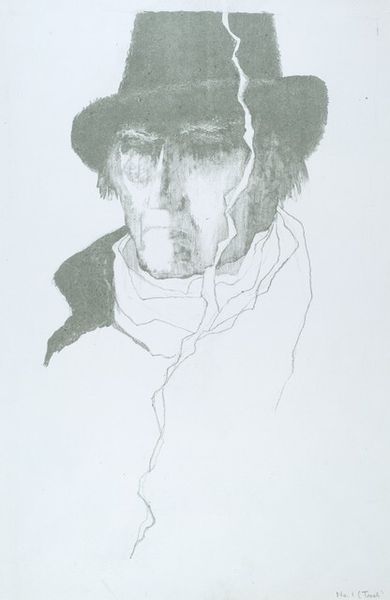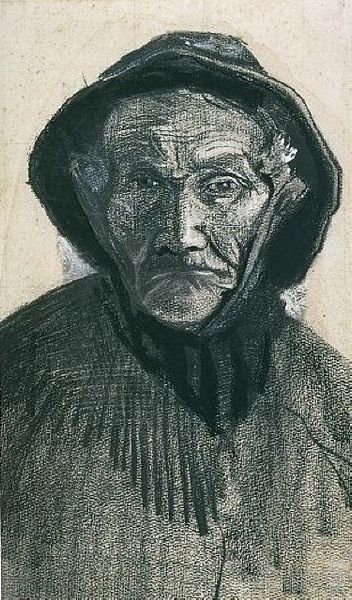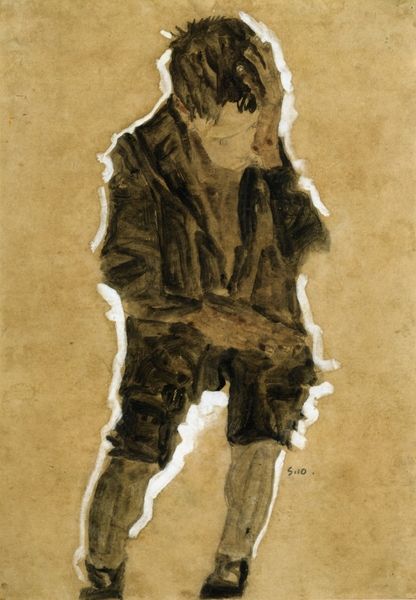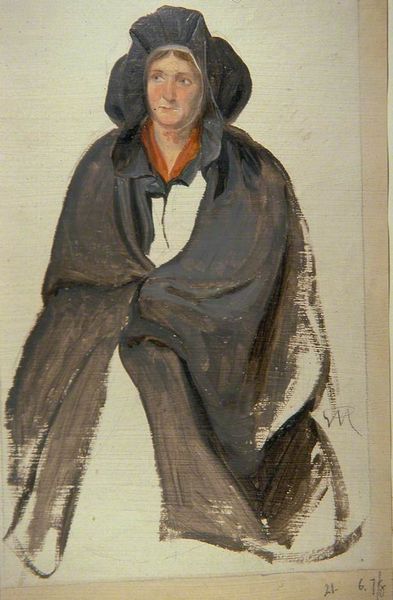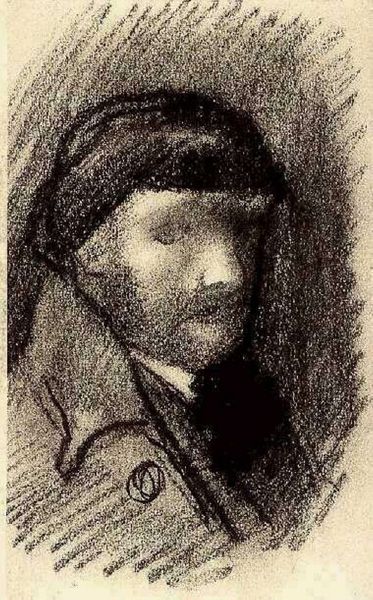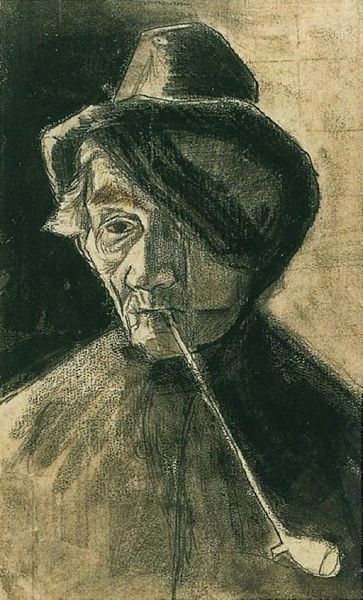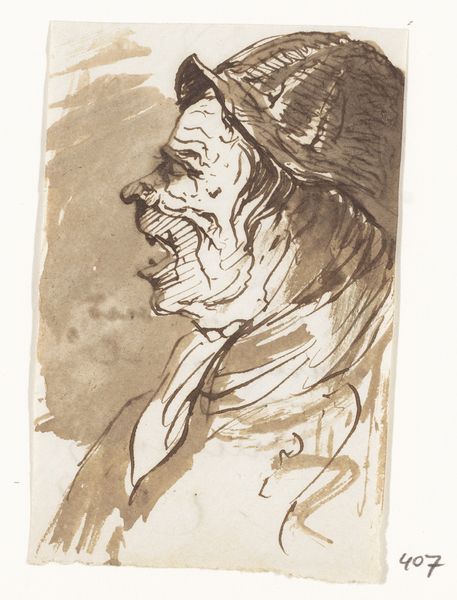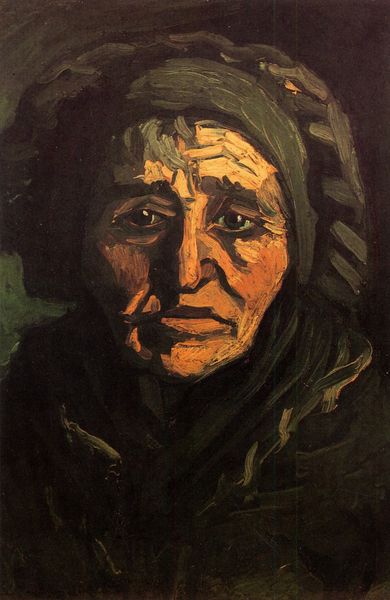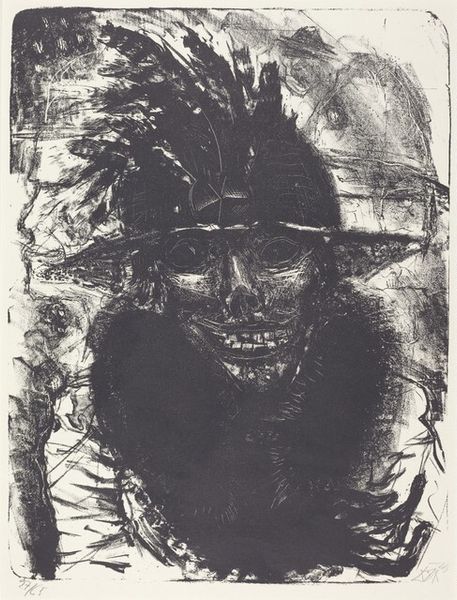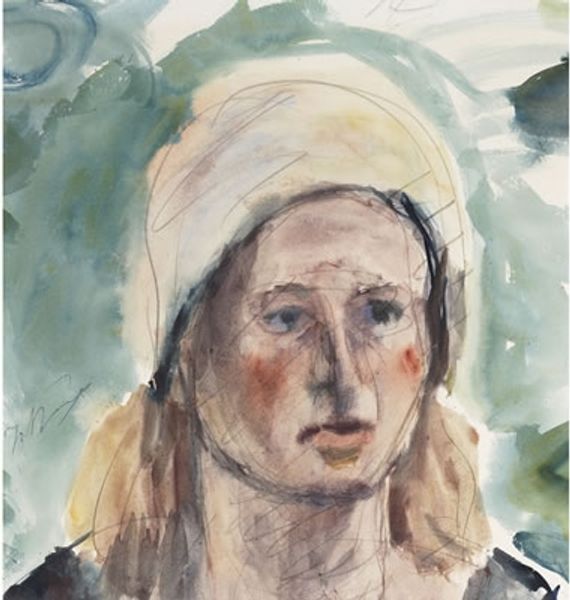
graphic-art, print
#
portrait
#
graphic-art
#
contemporary
# print
#
portrait reference
Copyright: National Gallery of Art: CC0 1.0
Curator: Benton Spruance's "Master of the Pequod," created in 1967, captures a striking portrait, a graphic print that seems steeped in the melancholy of the sea. Editor: Immediately, I notice the weight in those eyes. A palpable sense of weariness and maybe even resignation is conveyed through this, I would suggest, masterful handling of line and shading. The way the textures are rendered really gets at something elemental. Curator: Absolutely. Consider Spruance’s wider social context. This was a time of shifting power dynamics, civil unrest, and, particularly, disillusionment in America. One could argue the "Master" isn't simply a sailor but embodies a critique of power itself, questioning the authority that steers society. Editor: The production methods are also striking. It appears Spruance utilized lithography, a technique reliant on the very specific qualities of stone and grease. It involves intense physical labor—grinding the stone, preparing the image, pulling the prints. So, we might read the evident weariness as stemming from literal toil involved. The blurring lines between high art and labor-intensive processes speak volumes, I think. Curator: The allusion to Melville’s Ahab further deepens this. It reminds me of critical race theory when questioning societal structures rooted in exploitation. Is the Master, like Ahab, blinded by his own pursuits, leading not only himself but his crew toward destruction? The intersectionality of identity and purpose becomes hauntingly clear. Editor: And note the almost ghost-like quality of the print—it isn’t vibrant. The deliberate limitations imposed by Spruance in this printing process push us toward themes of mortality and the cost of ambition. These understated shades don't scream, they murmur a tale of decline, hinting to me, at the ephemeral nature of control. Curator: Indeed. Looking through a lens attuned to critical perspectives reveals "Master of the Pequod" as not just a portrait, but as a profoundly nuanced meditation on power, labor, and the individual within the vast machinery of societal forces. Editor: The art lies, fundamentally, not only in depicting a subject but in capturing a state, produced by, and reflected in, material reality. Curator: A reminder, then, that art invites us to confront uncomfortable truths about ourselves. Editor: And to understand the complex processes behind their realization.
Comments
No comments
Be the first to comment and join the conversation on the ultimate creative platform.

